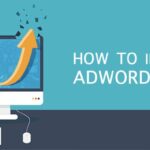Are you looking to set up an AdWords PPC account but been clueless on how to go about it? In order to do so, you need to have some basic fundamentals in place to design successful PPC campaigns:
Do I have an appealing website for visitors?
AdWords can help get people to your site, but beyond that, a lot depends on the parameters mentioned below:
Website page loading time – Should be minimal Website navigation – Site navigation should be easy & user-friendly Website structure – Website content & Product/Service placement should be adequate and not clustered
What is my PPC Strategy?
Before you set up an AdWords account, you need to understand what is your end objective; is it Leads/Subscriptions/Registrations/Buy or Purchase etc. This should be followed by deciding an adequate Account Budget for your PPC campaigns. This is extremely important while setting up your PPC ads in order to achieve your desired goals.
Bids and Budget
To run your ads on Google, you’ll need to decide on the right budget and bidding options. Budget is a limit that you set for your Adwords account to spend over a specific period of time. It should be an amount you will be comfortable spending per day.
Maximum Cost Per Click (Max. CPC) bidding for a Keyword is the most you’re willing to pay for a click on your ad through a particular Keyword. Higher the bids, higher will be the user traffic to your campaigns, which also could result in higher spending. You need to very carefully manage your bids as per your account objectives. To start with, ensure that your Keywords at least have a First-page presence on the Search Engine. Best Practice is to opt for Manual bidding for Bids via Campaign Settings.
Keyword Planning & Research
Keyword research is the basis on which you build your Adwords account. The most important thing to keep in mind while doing a Keyword research is Relevancy. I cannot stress enough on the fact that the better the relevancy of your keyword is to your Products/Services the better will be a response from your respective audience.
What is a Keyword?
The keyword is a word or a phrase that a user types in a Search Engine (Google, Bing, etc.), commonly known as a Search Query while searching for your Products/Services. There are various tools available online to research and survey Keywords. The most convenient and beneficial way is to do your Keyword research through the Google AdWords Keywords Tool available under the Tools tab in any AdWords Account.
One of the most crucial things to keep in mind while doing a Keyword research is to think like a User/Customer. Ponder over terms that a given user could type in on Search engines related to your Products/Services. It will help you significantly in connecting with your targeted Audience.
Once you develop a list of Keywords based on your products/services combined with specifications like Geo, Brand, etc., the next important step is to segregate them into different groups called Ad Groups on the basis of the theme of researched Keywords.
Some Tips For PPC Keyword List Creation Here are 3 tips for creating your initial PPC keyword list:
1. Less is More: Try to start with your core keywords. Maintain a range of 10-15 Keywords per AdGroup. This will help you generate good Quality Score for your Keywords.
2. Don’t be too broad/generic: Broad keywords can be generic in nature, have high competition and could also have higher cost-per-click.
3. Don’t be too specific. Specific keywords tend to perform better than generic keywords, but being too specific can limit traffic to your website.
Campaign Structure Basics & Best Practices
It is another important aspect to consider while setting up your account. Right structure and organization of Campaigns & Ad Groups have a high impact on your Keyword’s Quality score and eventually on your overall account performance. Choosing Your Campaigns and Ad Groups
There are many ways to set up your account. Your Campaigns & Ad Groups can be based on the following factors:
- Products/Services
- Geographical location
- Brand & Generic terms
- Seasonality/Occasions
- Keyword match types
Campaign Settings
Some of the top settings to enable in your AdWords account: Locations and Languages In which Geographical locations do you want your ad to show? For which regional Languages would like to show your Ads on? This setting can be used to include or exclude a particular location/region and language. Networks and Devices
Search and Content Network –You have the choices of Google search, which is Google.com only, and the entire search network. This will include Google.com and all of their partner sites.
Devices Setting – Marketers can choose “All” (Desktops & Laptops, Mobile Devices, Tablets) for this option. It allows you to show on desktop computers as well as laptops and mobile devices with full browser capability.
Advanced Settings
Ad Rotation: Best Practice is to opt for Optimize for Clicks followed later by Optimize for Conversions post Conversion tracking implementation. Ad Delivery: Best Practice is to opt for Accelerated type (Shows ads on every user search), however, if you want to show your ads evenly throughout the day then with the low budget then you should opt for the Standard type. Ad Scheduling: Go to All Hours/Days setting to launch your campaign initially. If you have specific work timings then you may schedule your Ads accordingly.
Ad Copy Character Limitations
Headline: 25
Description Line 1: 35
Description Line 2: 35
Display URL: 35
Destination URL: 1024
You should use as many characters available in Ad Copies as possible to maximize on your messaging. The golden rule here will be to use 1 Call to Action in an Ad copy (Enroll now, Contact Us Now, Book Now, etc.). Always ensure you use your top USPs in your Ad messaging.
After Setting Up AdWords Account The Most Important Thing Is To Write/Create A Compelling Ads That Attracts Customers.



